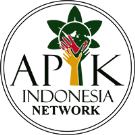STUDI ETNOBOTANI TUMBUHAN OBAT MASYARAKAT KELURAHAN KEMBANG PASEBAN KECAMATAN MERSAM KABUPATEN BATANGHARI
DOI:
10.29303/jbl.v5i2.881Published:
2022-08-14Issue:
Vol. 5 No. 2 (2022)Keywords:
Index Cultural Significance, Plant Part ValueArticles
Downloads
How to Cite
Downloads
Metrics
Abstract
Ethnobotany is a branch of biological sciences that examines the relationship between society and the world of plants. Plants have an important role in the sustainability of life, especially in the utilization as medicinal and food ingredients by a number of traditional in Indonesia. Indonesia has a high biodiversity so that the utilization of biological resources can not be separated from plants that live in nature both intentionally planted and that grow wild in the forest to meet the needs of daily life, for example as a traditional medicine material. Traditional medicine using plants is still found in Jambi Province which has abundant natural wealth, one of which is in Batanghari Regency, Mersam Subdistrict, especially in the Kembang Paseban Village Community. The research aims to find out the types of plants that are used as medicines, the parts used, the way of processing, the benefits of medicinal plants used, the measure of use, cultural value as well as plant parts used as medicinal materials in the community of Kembang Paseban Subdistrict Mersam Batanghari. The research method uses snowball sampling interview method and purposive sampling as well as participatory observation. Based on the results of the study, there are 67 species from 35 families used by the community of Kembang Paseban Village. With the highest value on the leaves as much as 43.01%. The way of processing is brewed, squeezed, kneaded, shredded, sailed to the fire, eaten directly, freshed, and pounded. Boiling medicinal plants is most widely done and considered more effective. Plants with the highest ICS value in the community of Kembang Paseban Village are capo leaves (Blumea balsamifera L.) and keriki leaves (Jatropha curcas L.).
Â
Â
Author Biography
Ade Adriadi, Universitas Jambi
License
Copyright (c) 2022 Ade Adriadi, Revis Asra, Siti Solikah

This work is licensed under a Creative Commons Attribution 4.0 International License.
The Authors submitting a manuscript has understood that if accepted for publication on Jurnal Belantara, the copyright of the article shall be assigned to Jurnal Belantara of the Forest Study Program University of Mataram as the publisher of the journal. Copyright encompasses rights to reproduce and deliver the article in all forms and media, including reprints, photographs, microfilms, and any other similar reproductions, as well as translations.
Jurnal Belantara of the Forest Study Program University of Mataram and the Editors make every effort to ensure that no wrong or misleading data, opinions, or statements be published in the journal. In any way, the contents of the articles and advertisements published in Jurnal Belantara are the sole responsibility of their respective authors and advertisers.
We strongly encourage that manuscripts be submitted to the online journal system in http://belantara.unram.ac.id/index.php/JBL/index. Authors are required to create an account and submit the manuscripts online. For submission inquiries, please follow the submission instructions on the website. If the author has any problems with the online submission, please contact Editorial Office at the following email: [email protected]
Contributors are responsible for obtaining permission to reproduce any materials, including photographs and illustrations, for which they do not hold the copyright and for ensuring that the appropriate acknowledgments are included in the manuscript.
Users of this website will be licensed to use materials from this website following the Creative Commons Attribution 4.0 International License. No fees charged. Please use the materials accordingly.











